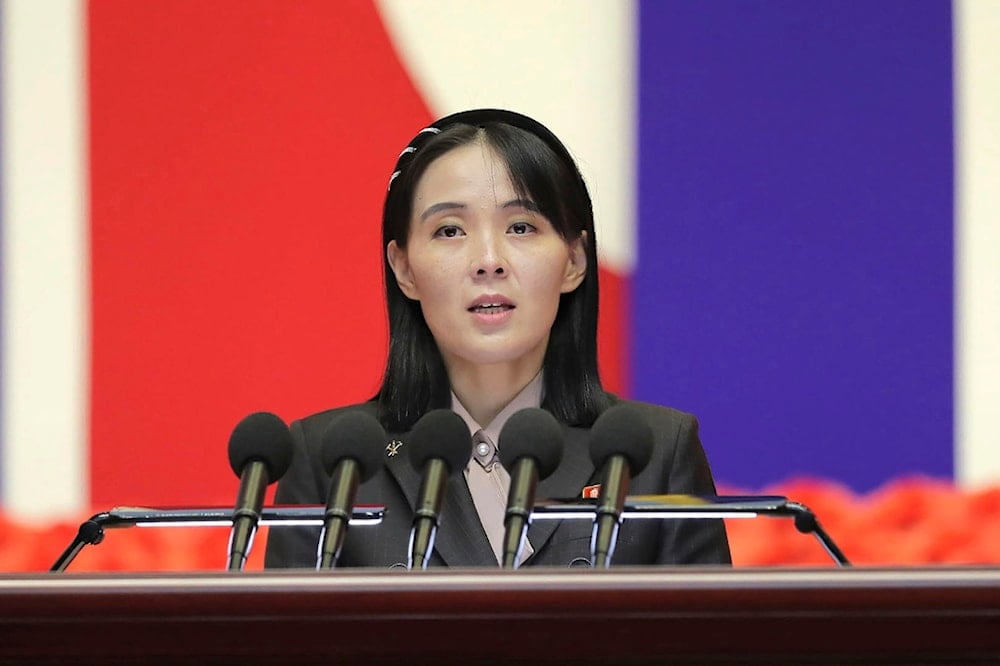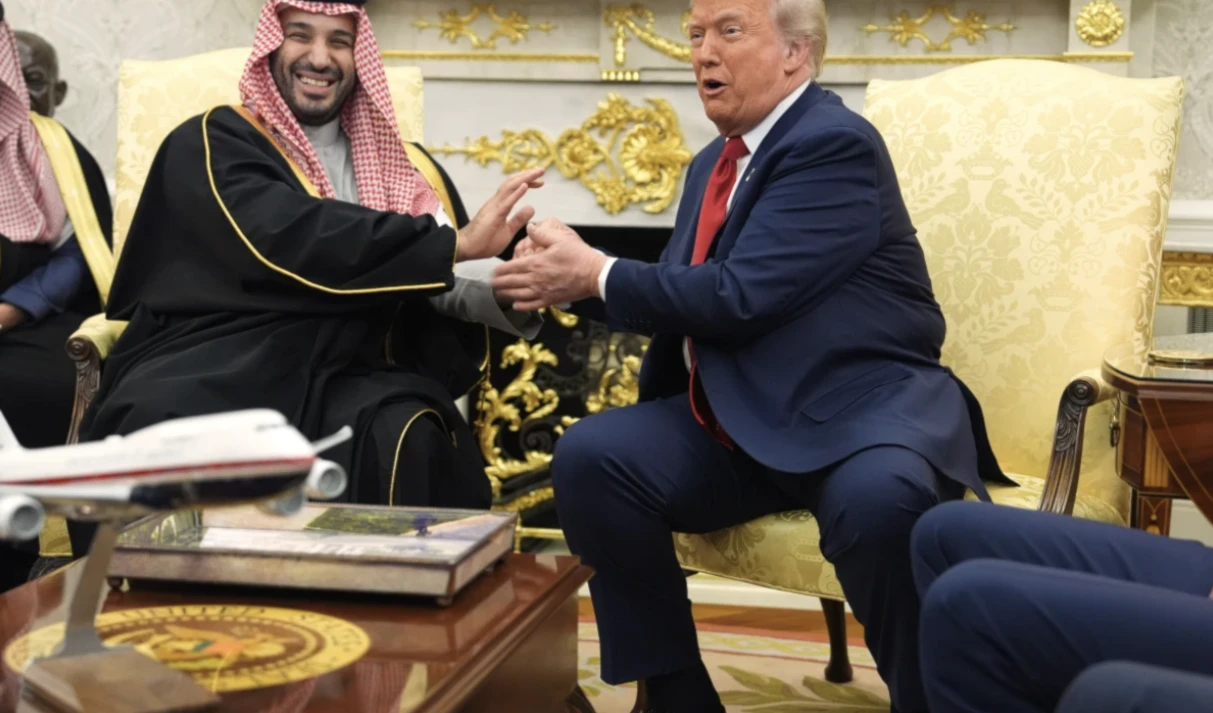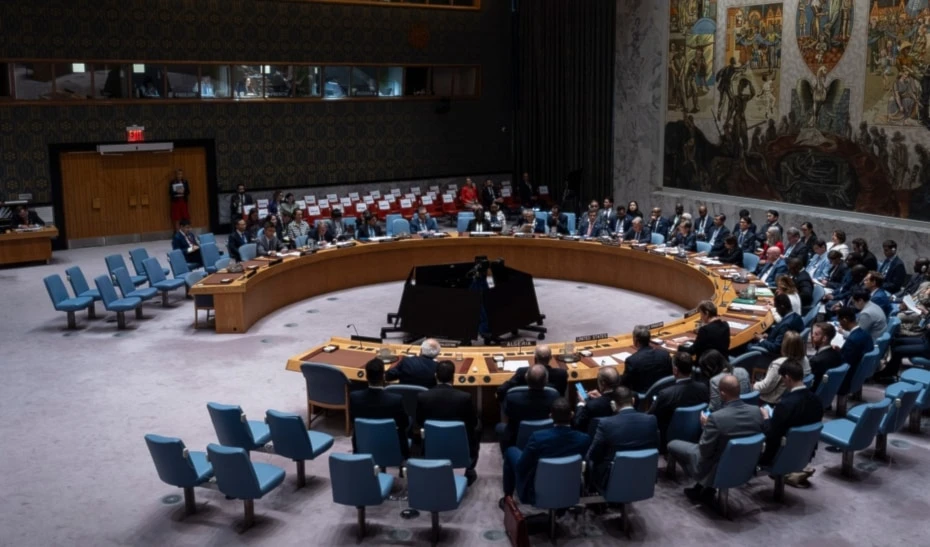DPRK slams US-Japan-South Korea war games as ‘reckless’
Kim Yo Jong has warned that the upcoming US-Japan-South Korea drills near Jeju Island heighten tensions and risk destabilizing the region.
-

This photo provided by the DPRK government, Deputy Director of the Publicity and Information Department of the Workers' Party of Korea, Kim Yo Jong, delivers a speech during a national meeting against the coronavirus, in Pyongyang, DPRK, on Aug. 10, 2022 (Korean Central News Agency/Korea News Service via AP, File)
Deputy Director of the Publicity and Information Department of the Workers' Party of Korea, Kim Yo Jong, denounced upcoming joint military exercises by the United States, South Korea, and Japan as a “reckless show of strength” that would backfire on the allies, state media reported Sunday.
The trilateral drills, scheduled from Monday to Friday near South Korea’s Jeju Island, will combine naval, air, and missile-defense operations. Washington and Seoul, which hosts around 28,500 US troops, will also conduct a tabletop exercise designed to integrate their military assets.
Kim Yo Jong called the exercises a “dangerous idea".
“The reckless show of strength made by them in real action in the vicinity of the DPRK, which is the wrong place, will inevitably bring bad results to themselves,” she stressed in a statement carried by the Korean Central News Agency (KCNA).
Pyongyang has long branded such allied drills as "invasion rehearsals". The DPRK also views the latest maneuvers as “scenarios for limited or full-scale nuclear strikes and attempts to neutralize its launch platforms,” said Hong Min, a senior analyst at the Korea Institute for National Unification, in comments to AFP.
DPRK’s Kim Jong Un oversees final solid-fuel ICBM engine test
Kim Yo Jong’s remarks came days after DPRK leader Kim Jong Un personally supervised a test of a solid-fuel engine designed for intercontinental ballistic missiles. The trial, described as the ninth and final in the development phase, signals that a full test launch of a new long-range missile could take place in the coming months.
Images published by the Korean Central News Agency (KCNA) last Monday showed Kim observing the fiery blast of the engine with binoculars. One photo captured a red horizontal flame, evidence of what KCNA called a “ground jet test of high-thrust solid-fuel engine using the composite carbon fiber material,” which it said marked “the last one in the development process.”
At the time, Kim hailed the achievement as a milestone for the country’s weapons program. The new rocket engine, he said, “heralds a significant change in expanding and strengthening the nuclear strategic forces” of the DPRK. The announcement comes just a week after Pyongyang unveiled the Hwasong-20, billed as its next-generation intercontinental missile.
Wider context
Kim’s test followed his high-profile trip to Beijing, where he stood alongside Chinese President Xi Jinping and Russian President Vladimir Putin during a military parade marking Japan’s World War II surrender. The optics reinforced the emerging alignment between Beijing, Moscow, and Pyongyang at a time of heightened global tensions.
Solid-fuel missiles have long been a goal for the DPRK, given their ease of transport, concealment, and rapid launch compared with liquid-fuel rockets.
By using lighter carbon-fiber components, Pyongyang aims to extend range and durability. “By securing both lightweight and thermal durability, it demonstrates the domestic development of essential materials for the extended range,” said Hong Min, a senior analyst at the Korea Institute for National Unification.
It is worth noting that the country has repeatedly declared that its nuclear weapons are not up for negotiation. In August, it dismissed calls from South Korean President Lee Jae Myung for a “path to denuclearisation,” branding him a “hypocrite". The DPRK reiterated, “The North would remain unchanged in our stand not to abandon the nuclear weapons, the prestige and honor of the state.”

 4 Min Read
4 Min Read










